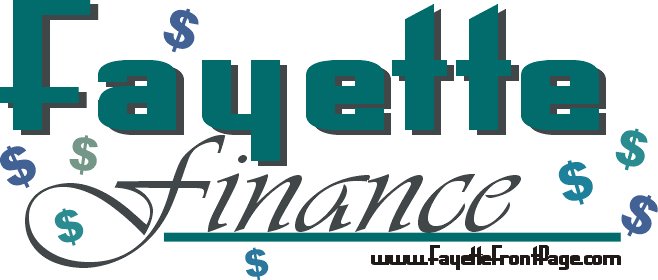Gov. Nathan Deal and Georgia Treasurer Tommy Hills today (March 22) announced that the nationally recognized credit rating firm of Standard and Poor’s affirmed its highest money market fund rating of AAA for Georgia’s own Georgia Fund 1.
“Georgia continues to demonstrate excellence in terms of AAA ratings,” said Deal. “The success of Georgia Fund 1 is a reflection of our state’s commitment to sound fiscal management, even during the worst of budget crunches.”
Treasurer Hills echoed his sentiment: “I am gratified that Standard and Poor's continues to assign its highest rating to Georgia Fund 1,” said Hills. “This is a clear signal to Georgians that their governmental funds are being invested in adherence with the highest standards of money management."
For the past 30 years the Office of the Georgia State Treasurer has managed and administered a local government investment pool (LGIP) called Georgia Fund 1. The LGIP is available for the short-term investment funds of Georgia’s county and city governments and school boards, co-investing with the state treasury and Georgia’s colleges and universities. Georgia Fund 1 operates like a traditional money market fund for governments providing all investors with safety, liquidity and competitive investment returns.
Georgia Fund 1 is one of the largest LGIP’s in the nation, and for the past 20 years its investment performance has outperformed the benchmark returns for all LGIP’s. More than $8 ½ billion is currently invested in Georgia Fund 1.
-----
Community News You Can Use
Click to read MORE news:
www.GeorgiaFrontPage.com
Twitter: @gafrontpage & @TheGATable @HookedonHistory
www.ArtsAcrossGeorgia.com
Twitter: @artsacrossga, @softnblue, @RimbomboAAG @FayetteFP
Wednesday, March 23, 2011
Fund for local governments keeps top rating
Census Bureau Reports State Government Tax Collections Decrease $14 Billion in 2010
/PRNewswire/ -- State government tax collections decreased $14.3 billion to $704.6 billion in fiscal year 2010, the U.S. Census Bureau reported today. There was a $65.8 billion decrease in 2009.
These new data come from the 2010 Annual Survey of State Government Tax Collections , which contains annual statistics on the fiscal year tax collections of all 50 state governments, including receipts from licenses and compulsory fees. Tax revenues also include related penalty and interest receipts of the governments.
"The first response of researchers and analysts, when confronted with a new tax policy question, is to see what the Annual Survey of State Government Tax Collections data tell them about the question," said John Mikesell, a Chancellor's Professor at Indiana University's School of Public and Environmental Affairs. "These data make the public finance world easier to understand and to analyze."
According to the survey, corporate net income tax revenue was $38.2 billion, down 6.6 percent, while tax revenue on individual income was $236.4 billion, down 4.4 percent. General sales tax revenue was $224.5 billion, down 1.8 percent. These taxes comprised 70.8 percent of all state government tax collections nationally.
This survey provides an annual summary of taxes collected by state for up to 25 tax categories. For more information about this survey, visit http://www.census.gov/govs/statetax/.
Eleven states saw increases in total tax revenue in fiscal year 2010, led by North Dakota (9.6 percent), North Carolina (4.8 percent), Nevada (4.0 percent), and California (3.8 percent).
The states with the largest total tax revenue decreases were Wyoming (23.4 percent), Louisiana (14.2 percent), Oklahoma (13.5 percent), and Montana (11.0 percent).
States with the largest percent decrease in revenue from individual income taxes were Louisiana (22.2 percent), Tennessee (22.2 percent), North Dakota (18.0 percent) and New Hampshire (16.2 percent).
Severance taxes — collected for removal or harvesting of natural resources (e.g., oil, gas, coal, timber, fish, etc.) — were down $2.3 billion, a 17.4 percent decrease. This followed a 24.8 percent decrease in fiscal year 2009. The largest decreases in severance tax revenue were seen in the West and South. The Midwest saw an increase in severance tax revenue this year.
Revenue on taxes imposed distinctively on insurance companies and measured by gross or adjusted gross premiums (insurance premium sales tax) increased $754.0 million, up 5.0 percent. This followed a 4.6 percent decrease in fiscal year 2009. The largest increases in insurance premium sales tax revenue were seen in the Northeast and South.
These data do not include employer and employee assessments for retirement and social insurance purposes. Also excluded are collections for the unemployment compensation taxes imposed by each of the state governments. In addition, these data include tax collections for state governments only; they do not include tax collections from local governments.
Although the data are not subject to sampling error, the statistics are subject to possible inaccuracies in classification, response and processing. Every effort is made to keep such errors to a minimum through care in examining, editing and tabulating the data.
The tax revenue data pertain to state fiscal years that ended June 30, 2010, in all but four states. Amounts shown for these four states reflect the different timing of their respective fiscal years, which were the 12-month periods ending on March 31, 2010, for New York; Aug. 31, 2010, for Texas; and Sept. 30, 2010, for Alabama and Michigan.
-----
Community News You Can Use
Click to read MORE news:
www.GeorgiaFrontPage.com
Twitter: @gafrontpage & @TheGATable @HookedonHistory
www.ArtsAcrossGeorgia.com
Twitter: @artsacrossga, @softnblue, @RimbomboAAG @FayetteFP
